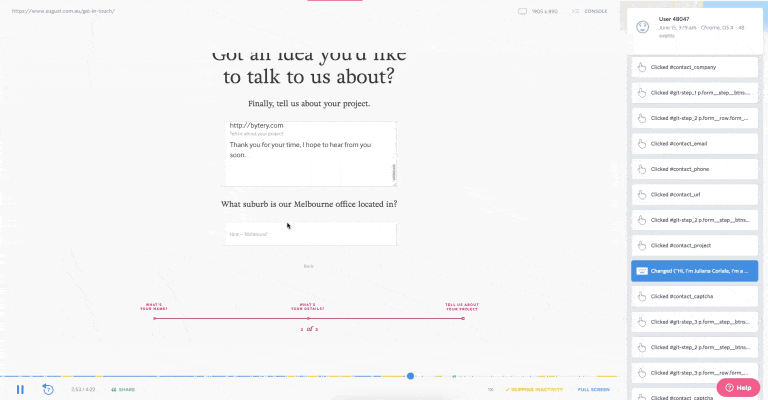- |
- |

You’ve probably heard this before: understanding what’s happening on your website is critical to success. When you measure and analyse who’s engaging with your business—and how—you’re empowered to make better strategic decisions that help grow your organisation by delivering on its goals.
However, in reality, it’s surprisingly common to hear tales of investment in web analytics—some small, some significant—where organisations are left deflated and devoid of confidence after a lack of results. For the uninitiated, analytics can seem like a blend of science and magic.
What’s more, calculating an exact return on investment from web analytics can be incredibly difficult. While cost is relatively easy to calculate (tools, agency fees, resources etc.), identifying specific or accurate returns can be troublesome.
Tactics borne out of analytics insights may produce huge gains but over a long period of time. Or they may be impacted by external factors. Or the insight or idea behind a tactic was great, but the execution was substandard. It’s completely natural to feel sceptical.
That said, most organisations will know, or at least feel, whether their investment is paying off. If you’re regularly investing in web analytics activities, it is important that those activities generate more value—in either reduced cost or gained opportunities—than you spend on them. You’re hoping for a return on investment in web analytics; for the activity to be considered an asset, not an expense.
So how do you improve your chances of success? Here are three ideas to consider.
1. Align analytics activities with strategic goals.
Have you ever found yourself asking your agency, ‘how many hits did we get last month?’ or ‘what’s our bounce rate?’
You may be asking because you’re interested, or because you think these questions will yield valuable insights.
But…those metrics probably aren’t the most useful to your organisation. Generic tracking inevitably creates broad and generalised results. You’ll get significantly more value from your web analytics investment if the things you measure are closely aligned to what your organisation is trying to achieve.
For example, if your current strategic focus is to retain as many customers as possible, you should focus on metrics that relate to retention, such as:
- Repeat visitation.
- Repeat orders.
- Customer lifetime value.
However, beware of unintended consequences
When choosing metrics, it’s important to consider—and hopefully mitigate—any unintended consequences that may be triggered by the tactics you employ.
For example, if one of your key metrics is ‘new customer signups’, does that send a message to your marketing team that they should ignore existing customers? Or that they should try to acquire new customers instead of shooting for conversions?
When developing your web analytics measurement plan, remember to consider these potential factors. Otherwise, they may come back to bite you.
2. Go beyond Google Analytics.
Google Analytics is awesome. Trust us; we’ve built careers out of using it.
The platform is excellent for tracking how people got to your site, their attributes, what pages they visit, and whether they complete various actions (for example, making an online purchase or subscribing for a newsletter).
However, Google Analytics is not great for analysing in-page behaviour.
There’s a better way…
Did someone hover over a certain button on a page and fail to realise they could click it? Are people finding certain features hard to use? Are various elements of functionality broken when people visit your site using older browsers?
Will you ever find qualitative usability issues tucked away in the quantitative metrics of Analytics?
It is possible to get creative with Google Analytics event tracking to measure these types of issues or interactions. But it can be tricky to implement, and difficult and time consuming to analyse.
If you are looking for a solid return on investment from your web analytics, it’s important you look beyond Google Analytics. There are other solutions available that offer a wide range of incredibly powerful insights. Try googling ‘session replay software’ to get a taste of what’s possible. Or read this.
Consider feeding in ‘offline’ data
Your website is a crucial part of a customer’s journey. But it isn’t the only part. When a customer interacts with your organisation offline, measure their attributes and specific offline behaviours. Then, feed that valuable information back into your online marketing.
For example:
A bike shop uses web analytics to make decisions on where to spend their marketing budget. However, through their loyalty program, they also collect information about their customers, including audience demographics and the type of riding each new customer enjoys most (mountain biking, road cycling, commuting etc.).
If the shop’s offline data indicates that women aged 35-45 who ride for commuting purposes spend more money in the long term than men aged 18-35 who prefer mountain biking, that’s incredibly insightful data that can be used to inform marketing decisions. You probably wouldn’t find that information in your website’s analytics.
3. Get support from the wider team.
From experience, many organisations keep their data contained. It’s typically only available to a small number of people—usually the marketing team.
For organisations who adopt this practice, marketing only ever achieves similarly siloed results. Marketing teams often find it hard to get buy-in or approval for new work because they’ve failed to gather support from the wider organisation, and senior team members or approvers fail to see how the work fits into the big picture.
A 2015 study by McKinsey revealed two important insights. When considering effectiveness in data and analytics:
- The most significant reason for organisations’ effectiveness was ensuring senior management involvement in data and analytics activities.
- The most significant challenge to organisations’ effectiveness was designing an appropriate organisational structure to support analytics activities.
In other words, if you’re looking for a solid return on investment on your web analytics activities, get out of your silo and get buy-in from others in your organisation; in particular the senior management team.
Who else should get involved?
- Your sales team. Keep them informed on what is successfully driving leads. Sales teams can provide critical information from the front-line that you won’t see in your web analytics, like ‘we’ve seen an increase in leads similar to what’s recorded in your web analytics, but the quality of those leads has actually dropped’. It’s incredibly difficult to pluck these insights from your web analytics data.
- Customer services. Similarly, customer service staff will be able to provide front-line information from the coalface that your web analytics won’t tell you.
- Your web development team. Your analytics is heavily reliant on a web development team (whether internally or through an agency) to make website changes that enable the capture of data. In our experience, these teams are better placed provide more value if they understand the bigger picture of why you’re capturing certain information. Sharing the strategy with them doesn’t hurt. Make friends with developers; at some point, you’ll need them!
Analysts working together with other team members to create tangible impact.
Communicating your results
While it’s essential to get initial buy-in, it’s equally important to maintain buy-in over time. It’s critical to keep providing value through analytics, ensuring the right people are kept updated on progress and have the insight they need to take action.
Dashboards are great for getting a quick snapshot of the current state of play. Adding a dashboard to an office TV is a great option, making your key metrics easy to access at any point in the day.
Regular reports (provided they are designed well) can be a great way to communicate insight. Reports are contained, expected, and can be used as a reference at a later date.
But while dashboards and reports are common staples of web analytics activity, there’s no substitute for human-to-human communication.
Don’t set up a dashboard and assume someone will keep an eye on things. Don’t send a report and assume it will be read, at least not word-for-word.
Dashboards and reports aren’t the most effective way to maintain organisational buy-in.
If you want to keep key people in your organisation across the valuable insights that should concern them, make a time to present the data. Your message is much less likely to get lost if you both show the data and then tell a story about it—what it means, why it matters, and what we need to do about it.
Don’t rely on reports: present your data in person.
Preferably, do this in person. This provides your audience an opportunity to ask questions and offer their own insight into the meaning of the data. If that’s not possible, at a minimum, record a video to explain the results.
—
Let’s summarise with a somewhat obvious but crucial point.
Web analytics is only a solid investment when you use the data to continuously improve: to inform your marketing, streamline your approach, and make better decisions.
Any analytics investment will only pay dividends if you do everything in your power to enable you—and your team—to act on the data.
Like buying a gym membership and then avoiding the gym, investing in analytics is an exercise in futility if you don’t actually do anything with the insights.
Creating the right environment is key.
Just like a plant needs the right environment to thrive, so too does your analytics activity. The right environment means ensuring you have meaningful, relevant information at your fingertips. It means ensuring you can make decisions on that information quickly, so you can get on with the work it informs. And it means getting the right people in your organisation to believe in the value of that information, to care as much as you do, and to have the desire to do something with it.
If you achieve all of these things and create the right environment within your organisation, you’re likely set for many happy returns.
More Articles
Up for some more?
Get your monthly fix of August happenings and our curated Super8 delivered straight to your inbox.
Thanks for signing up.
Stay tuned, the next one isn't far away.
Return to the blog.



